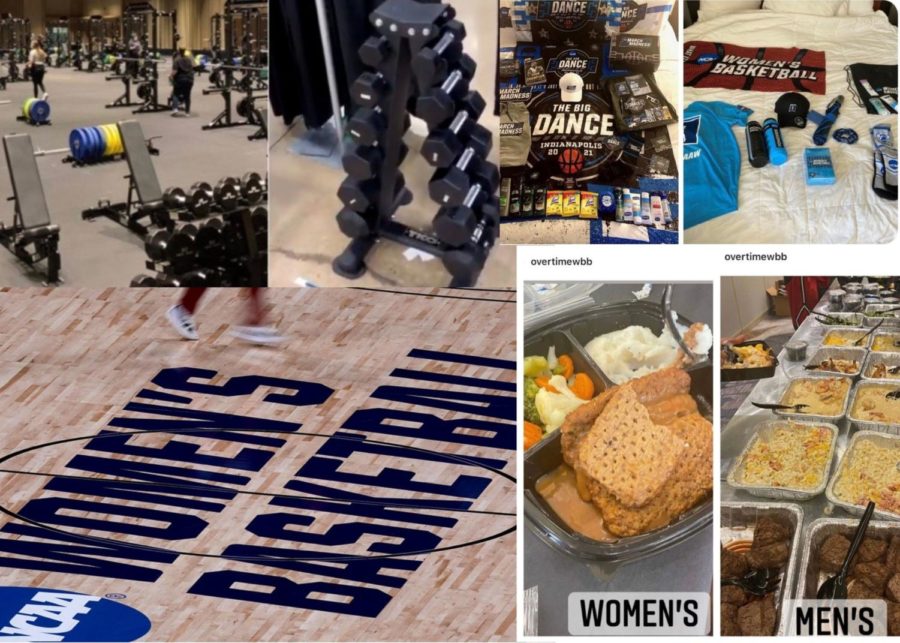Disparities in NCAA Women’s Tournament
March 30, 2021
Sixty-four women collegiate basketball teams arrived at San Antonio, Texas on March 19 for the NCAA Women’s March Madness tournament. On the same day, Sedona Prince, a sophomore at the University of Oregon, posted a video on the social media app TikTok that exposed the women’s weight rooms versus the men’s weight rooms. Since then the video has been seen by 9.2 million people. In the video Prince shows a single stack of six pairs of weights and a handful of yoga mats on a folding table. This was all the equipment the women were given for their weight room. In the next clip, the men have a weight room similar to one you would find at a high-end public gym. The NCAA has since updated the weight room by adding more equipment and released a statement in response to the video.
“We acknowledge that some of the amenities teams would typically have access to have not been as available inside the controlled environment. In part, this is due to the limited space and the original plan was to expand the workout area once additional space was available later in the tournament,” said Lynn Holzman, NCAA VP of women’s basketball.
This is only one of many problems that the NCAA has dismissed. With both the men’s and women’s tournaments being held in a bubble, the catering of food had to be carefully controlled. The men’s teams have been served buffet-style meals, while the women have been given small pre-packaged foods. The women’s tournament is being played in San Antonio, Texas, which is a state that has chosen to dismiss COVID-19 restrictions, while the men’s tournament was held in Indianapolis, Indiana. By choosing Texas, NCAA has chosen to stand by Texas’ decision to dismiss their mask mandate sending a message that they don’t care if these female athletes contract COVID-19. Due to COVID-19, teams were required to get tested every day to ensure none of the players, coaches, or staff have COVID. The NCAA bought “gold standard” PCR tests for the men’s teams. On the other hand, the women have been tested with less reliable tests, tests that the FDA has said, “have a higher chance of missing an active infection,”.
When teams arrived in the bubble, they were given a “swag” bag. When pictures were released of these bags, people were quick to notice that the women’s bag had significantly fewer items than the men’s. During the first two rounds of the women’s games, NCAA opted to not have any photographers. But during the men’s opening games there were thousands of photos. The NCAA has also decided to only use the “March Madness” branding in the men’s tournament. Instead of “March Madness” across the court, women’s basketball is written on the court. The NCAA has not released a statement as to why they have chosen not to allow women to use “March Madness” as a symbol. Since NCAA is a private company, they are not required to follow Title XI and are not required to release statements about revenues, budgets, or costs.
The NCAA has held the women’s March Madness tournament for 39 years and has not contributed a single dollar for a win in the women’s tournament. Sportico.com says “If No. 1 seed Gonzaga wins the men’s NCAA Tournament, they’ll bank more than $10 million for the West Coast Conference,” while, “if No. 1 seed Stanford wins the women’s NCAA Tournament, the Pac-12 won’t get a single penny for it”. The women do not get any bonuses paid to their leagues by wins for their teams. The NCAA has yet to release the numbers for the costs or revenues of the women’s tournament. As the popularity of women’s college basketball increases, the NCAA seems to not be putting any time and effort into continuing the interest in women’s college basketball.




